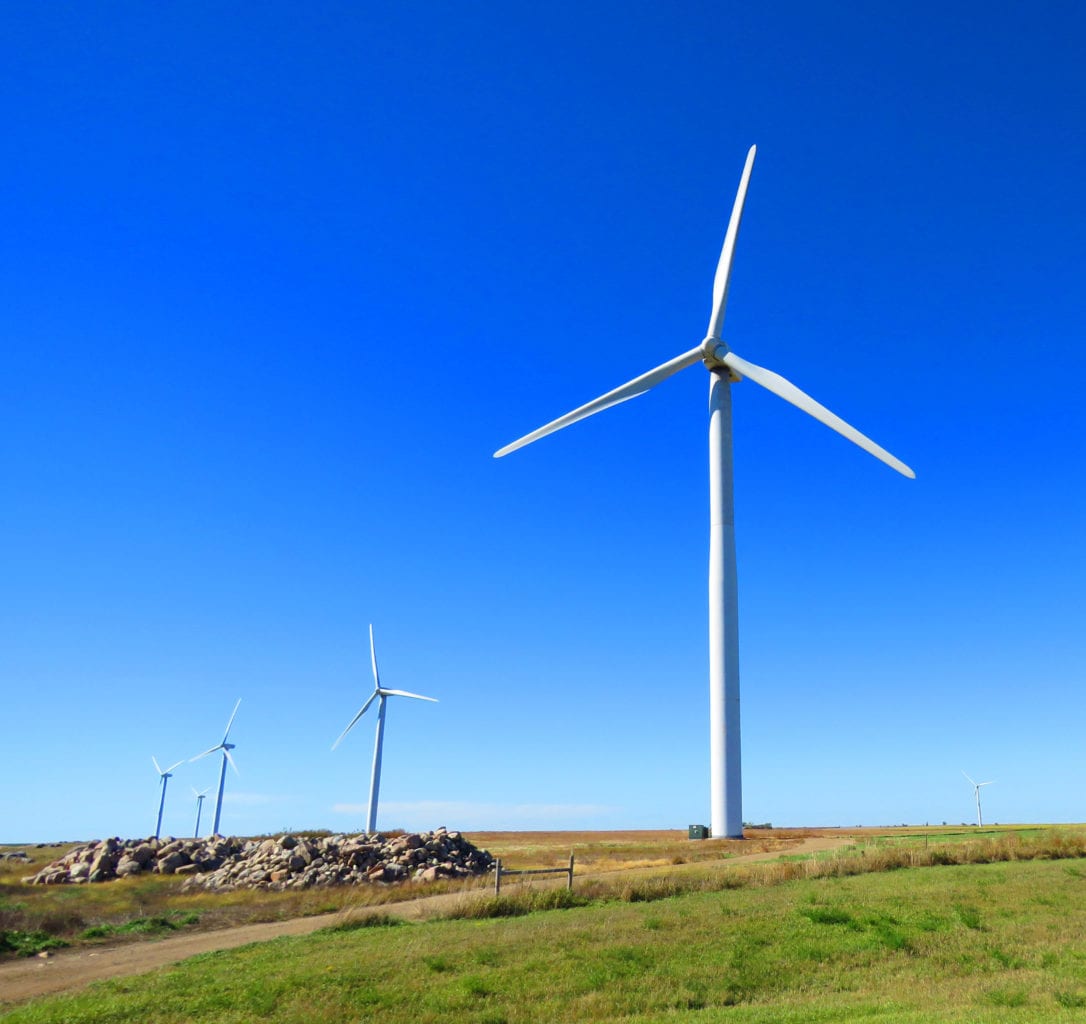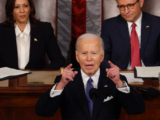Staff Report –
WASHINGTON, D.C. — The Biden administration announced guidelines for the Greenhouse Gas Reduction Fund program this week created under the Inflation Reduction Act, which will dole out $27 billion in federal spending over the next few years to mobilize billions more in private capital to reduce pollution and improve public health, lower energy costs, increase energy security, create good-paying jobs and boost economic prosperity in communities across the country.
The Environmental Protection Agency announced the initial guidance in a press release on the design of the program and outlined its key parameters as a grant competition that will ultimately award nearly $27 billion to leverage private capital for clean energy and clean air investments.
“Thanks to President Biden’s Inflation Reduction Act, the Greenhouse Gas Reduction Fund will unlock historic investments to combat the climate crisis and deliver results for the American people, especially those who have too often been left behind,” EPA Administrator Michael S. Regan said in making the announcement.
“The initial program design … will ensure the fund fulfills its mandate to deliver benefits to all in a transparent and inclusive fashion,” he said. “With $27 billion from President Biden’s investments in America, this program will mobilize billions more in private capital to reduce pollution and improve public health, all while lowering energy costs, increasing energy security, creating good-paying jobs and boosting economic prosperity in communities across the country.”
The initial program design follows a robust stakeholder engagement effort with input collected from state, local and Tribal governments, community financing institutions, environmental justice organizations, industry groups and labor and environmental finance experts.
EPA will hold two competitions to distribute grant funding under the Greenhouse Gas Reduction Fund: a $20 billion General and Low-Income Assistance Competition and a $7 billion Zero-Emissions Technology Fund Competition.
EPA will implement these programs in alignment with President Biden’s Justice40 Initiative, which directs that 40 percent of the overall benefits of certain Federal investments flow to disadvantaged communities, including those facing disproportionately high and adverse health and environmental impacts. EPA expects to open competitions for funding under the Greenhouse Gas Reduction Fund by the summer of 2023.
“The Greenhouse Gas Reduction Fund is one of President Biden’s generational investments to build an equitable clean energy economy from the bottom up and the middle out,” said Senior Advisor to the President for Clean Energy Innovation and Implementation John Podesta. “It will create good-paying manufacturing jobs while helping to tackle climate change-the greatest challenge of our time.”
EPA also announced a national Community Roundtable series to continue a robust and inclusive engagement effort, focused on introducing the Greenhouse Gas Reduction Fund to communities across the country and learning about community-level solutions that the Fund can support.
“When we delivered the Inflation Reduction Act last year, we promised the largest investment in climate and clean energy ever made in our history, all while reducing energy bills and bringing good jobs to all communities across America. Now, less than a year later, the American people are seeing us follow through on that promise to improve the lives of families across the country,” said U.S. Senate Majority Leader Chuck Schumer. “A giant leap forward for bringing clean energy to communities who are too often left behind, the Green House Gas Reduction Fund is one of the concrete actions taken as a direct result of the Inflation Reduction Act to make access to reliable and clean solar power easier for millions of Americans. By investing in renewable energy, we’re revitalizing communities, creating jobs of the future, and delivering real help for the American people.”
EPA’s Greenhouse Gas Reduction Fund will include a nearly $20 billion General and Low-Income Assistance Competition to award competitive grants to eligible nonprofit entities that will collaborate with community financing institutions like green banks, community development financial institutions, credit unions, housing finance agencies and others. Together, these entities will leverage public dollars with private capital to invest in projects that reduce pollution and lower energy costs for families, particularly those in the low-income and disadvantaged communities that have had unequal access to private capital for far too long.
“Every community should have an opportunity to benefit from the investments we make in combatting climate change,” said Senator Tom Carper, Chairman of the Senate Environment and Public Works Committee. “As part of that commitment, we created the Greenhouse Gas Reduction Fund in the Inflation Reduction Act to leverage public and private investments in clean energy projects for our most underserved. I applaud EPA’s leadership for their work to meeting our ambitious targets within this program, which is likely going to result in the largest-ever federal investment in rooftop and community solar projects in low-income and disadvantaged communities. Implementing the Greenhouse Gas Reduction Fund is an important step in moving our nation toward a future that runs on clean energy and leaving no community behind in the process.”
Awardees will also facilitate technical assistance and capacity building to strengthen the community-based organizations, small businesses, workers, and suppliers required to accelerate the transition to an equitable net-zero economy and catalyze the jobs of the future. EPA expects to make between 2 and 15 grants under this competition.
“The climate crisis is happening now, and that’s why my Energy and Commerce Committee fought to enact this first-of-its-kind Greenhouse Gas Reduction Fund to ensure we meet this moment with the leadership and resources it demands. I’m thrilled with the progress EPA has made so far in getting this critical program off the ground,” said Representative Frank Pallone, Jr., Ranking Member of the House Energy and Commerce Committee. “This is a huge stride forward in our climate fight, one that will simultaneously create new, good paying jobs and bring affordable, homegrown clean energy to communities across the country. I look forward to continuing working with EPA to ensure these funds are used effectively to cut climate pollution and improve public health.”
Under the $7 billion Zero-Emissions Technology Fund Competition, EPA will award competitive grants to states, Tribes, municipalities, and eligible nonprofit entities to enable the deployment of residential rooftop solar, community solar and associated storage and upgrades in low-income and disadvantaged communities. This competition will ensure all families benefit from clean, affordable energy options. EPA expects to award up to 60 grants under this competition.
“After years of hard work to plant the seeds for the historic climate finance funding in the Inflation Reduction Act, I’m proud to see this investment blossom now as the EPA begins to realize our vision of creating a new, long-lasting program that will cut emissions, protect health, and create economic opportunity in disadvantaged and under-resourced communities,” said Senator Ed Markey, Chair of the Senate Environment and Public Works Subcommittee on Clean Air, Climate, and Nuclear Safety. “I look forward to continuing to work with the Biden administration, advocates and stakeholders to maximize all the benefits of this landmark program— from deploying cost- and climate-saving projects at the national, regional, state, and local levels, to leveraging new investments and revolving funding to support indirect recipients in getting projects into communities for years to come.”
EPA is moving expeditiously to develop these two grant competitions, utilizing the established technical expertise of agency officials in EPA and across the U.S. government, to invest public funding transparently and inclusively and deliver significant investments in the American people. EPA expects to release Notice of Funding Opportunities for these competitions in early summer 2023.
“For years, we’ve fought to take the idea of a national climate bank from a vision to a reality. With today’s action from the EPA, we’re one step closer: I applaud the EPA for moving forward in their efforts to capitalize the national climate bank network that we worked to create within the Inflation Reduction Act,” said Maryland Senator Chris Van Hollen. “I will continue working with the EPA to fully realize our vision of a self-sustaining climate bank that is national in scope, has a substantial multiplier effect, and is composed of diverse stakeholders, including community-based institutions and green banks, that will reduce greenhouse gas emissions, create jobs, and support communities that have been historically underserved.”
EPA initiated the program design process last October with a call for public input that resulted in nearly 400 detailed responses, hundreds of attendees at two public townhalls delivering over four hours of public comments, nearly two dozen targeted stakeholder meetings with state, local and Tribal governments, community financing institutions, environmental justice organizations, industry groups, labor organizations, and environmental finance experts.
“Thanks to the Inflation Reduction Act we passed last year, the Environmental Protection Agency is able to continue to invest in communities and our renewable energy future,” said Congressional Progressive Caucus Chair Pramila Jayapal (WA-07). “The Greenhouse Gas Reduction Fund will provide vital funding to create jobs, speed the development of new renewable energy technologies, and support development in communities across the country, all while contributing to the work to reach President Biden’s goal of 80 percent clean energy by 2030. I applaud the EPA for this ambitious new program.”
Stakeholders submitted thousands of pages of comments during the process with diverse perspectives on how to implement the program. Records of the responses EPA received during the stakeholder engagement process can be viewed inin the docket at regulations.gov. EPA will continue to assess feedback received by stakeholders to inform the design of the grant competitions.
“The $27 billion in the Inflation Reduction Act for a national Greenhouse Gas Reduction Fund is the single largest investment in clean energy, environmental justice, and carbon pollution reduction in American history. We have proven green bank models nationwide, including in Michigan, that not only mobilize investment directly into the most critical projects, but are creating incredible economic opportunity, with good-paying, high-value jobs,” said Representative Debbie Dingell (MI-12). “Over the next decade, this investment will help us build on current efforts by mobilizing financing and private capital for a range of clean energy projects to decarbonize communities—including low-income and disadvantaged communities—across the United States. Today’s announcement is the first major step forward to achieving an equitable clean energy economy. As one of the authors, I’m proud to have helped secure this important funding, and look forward to working with the EPA, my colleagues in Congress, and all our partners during the implementation process to urgently get this money to the communities that need it most, as well as meet our long-term climate goals.”
Vermont Senator Bernie Sanders said he was pleased that the funding will include a $7 billion residential solar program that he introduced to make it more affordable for low-income and working-class families to install solar on their homes and save money on their electricity bills.
“At a time when we face the existential crisis of climate change, the Inflation Reduction Act is a major and necessary investment in clean energy and energy efficiency,” Sanders said. “When people across the country are struggling to make ends meet while dealing with the increasingly severe impacts of climate change, it makes a great deal of sense to help households put solar on their roofs so they can create their own electricity, cut carbon pollution, and help create millions of good jobs. I look forward to working with the EPA on this program to make residential solar a reality for the millions of low-income and working families that need it the most.”
___
If you support truth in reporting with no paywall, and fearless writing with no popup ads or sponsored content, consider making a contribution today with GoFundMe or Patreon or PayPal.














